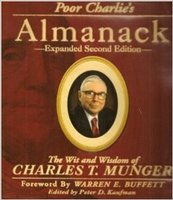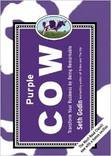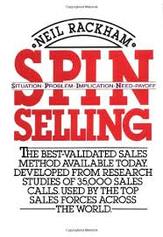 Over the last few months, I've been reading through Poor Charlie's Almanack: The Wit and Wisdom of Charles T. Munger, and today I finally finished it. It represents a pretty full collection of all of Munger's public lectures and most influential publications, a true compendium of practical wisdom. It was nice to read this big, heavy, long book over an extended period of time because I got to develop a pretty good grasp of Charlie's way of thinking, seeing the same examples and patterns repeated across the talks and drawing my own connections. It's amazing how passionate he is about improving education and providing people with much better mental models and checklists to avoid disaster and cognitive failure. Below are my personal biggest takeaways and notes. Intro Multidisciplinary Mental models 1 portrait of Charles munger Parents encouraged reading and gave books as gifts for holidays Liked Cicero Cicero, on a life well spent Pride in a job well done Self improvement so long as breath lasts Daily learning something Always return borrowed car with full tank of gas Educating kids at dinner table Morality tale and downward spiral tale Admit mistakes and learn from them immediately Do the job right the first time. Don't make excuses when screw up. Just fix it. Kids had jobs Taught kids to be skeptical and contrarian Always reading Couch message in anecdote and deliver in group setting to not single out Buying books for whole family Ritual and tradition, buying kids suits Desire to understand exactly what makes things happen Intense focus Figure out what ur best at and keep pounding away at it Ch 2 munger approach to life, learning, decision making Multiple mental models Business as an ecosystem; everything related Willingness to change mind Not buying or selling often Big money is in the waiting not in the buying or selling If can only invest 20 times in life, u will think much harder and load up on what believe in Focus on what to avoid first Think in 2 approaches: rational interests at play and subconscious psychological factors Circles of competence Margin of safety like backup system in engineering Checklist before doing deal Honesty best policy Ch 3 mungerisms: Charlie unscripted Profit more from always remembering the obvious than from grasping the esoteric Focus investing Low diversification Wait for the fat pitch Something not worth doing is not worth doing well Reliability is extremely important First step to success in anything is becoming interested in it Have wide mental models array and use them all Jump jurisdictional boundaries Avoid ideology Need to use all mental models as a checklist Use advertising for Pavlovian conditioning To persuade, appeal to interests not reason Nonegalitarianism: focus on your best people instead of just fairness 1 reward and punishment super response tendency Granny's rule: eat your carrots before dessert; do unpleasant tasks before rewarding yourself 2 liking/loving tendency 3 disliking/hating tendency 4 doubt avoidance tendency 5 inconsistency avoidance tendency 6 curiosity tendency 7 kantian fairness tendency 8 envy/jealousy tendency 9 reciprocation tendency 10 influence from mere association tendency Always tell us the bad news promptly. The good news can wait. 11 pain avoiding psychological denial 12 excessive self regard tendency 13 overoptimism tendency 14 deprival super reaction 15 social proof tendency 16 contrast misreaction 17 stress influence 18 availability misweighing 19 use it or lose it tendency 20 drug misinfluence 21 Senescence misinfluence 22 authority misinfluence 23 twaddle tendency 24 reason respecting 25 lollapalooza tendency
0 Comments
 Introduction The third selection of Half Half Man’s Book Club was Seth Godin’s Purple Cow: Transform Your Business by Being Remarkable. I read this book originally in February 2011 and quickly understood why this was such a classic marketing text. While its primary target is new product development, a magician’s act (as well as his or her style and character) can be considered products too, and many of the lessons from Purple Cow carry over directly. The title of the book comes from the idea that when you first drive to the countryside, cows look pretty cool. After a while, cows start to look pretty boring. However, a purple cow would be pretty remarkable, even after seeing normal cows for a while. It’s sad but true: Magic too can get boring sometimes. The art that is most fundamentally defined by the unexpected and impossible can be made to seem banal and commonplace when approached without the care and thought it deserves -- in short, when it’s unremarkable. If the audience doesn’t care, if it’s something they’ve seen many times before, or if it fits with stereotypes of how magicians are perceived (flashy costumes, cheesy lines, etc.), it becomes a much less interesting white cow. The four key Purple Cow principles can be leveraged to break that tendency: Don't be boring (be remarkable) Safe is risky (appeal to the edges, not the masses) Design rules now (focus on design, not marketing) Very good is bad (be remarkable) Don't be boring (be remarkable) The first step in becoming remarkable is to objectively determine your current level of appeal to the audience (boring or engaging). Trusting your own subjective opinion is not going to be enough, as most of us err either on the side of being too haughty or too harsh on ourselves, and it’s only with some sizable sample of audience testing that one can hope to reach any level of objective assessment of skill or remarkability. Godin argues that you should welcome criticism and in fact do things that provoke it. This means actively asking for feedback from trusted peers and paying close attention to negative reactions (or no reactions) and listening carefully to what words people use when they describe their experience to you. A performance is meant to invoke emotions; if you’re not seeing emotions, something’s likely wrong. Safe is risky (appeal to the edges, not the masses) Godin teaches that appealing to the center of the market and the masses is bad; you appeal to no one and your message becomes bland. He argues for the opposite, even if it means sometimes going to an extreme: if you show up in a parody, you're doing the right thing. This lesson is particularly useful for magicians who want to find a unique, compelling, and personal style and approach. Stay away from mass market appeals and what everyone else is doing. Question common practices and trends. Find a way to tell your own weird story. Find your own voice, style, and character. I’ve personally found Darwin Ortiz’s advice on these issues really helpful (1). Design rules now (focus on design, not marketing) In the context of new product development, Godin urges that your offering must be remarkable, just like a purple cow. You can no longer rely on advertising from a marketing department to simply sell existing products; you must innovate and focus on the product itself. And one way to do this effectively is by focusing on the design aspects of the actual product. The key is to change the product, not the ads, and the same lesson can apply to performers. Focus on honing unique skills and a compelling outlook on life or story that can be conveyed in your show. Yes, getting the presentation and marketing right also will help, but Godin would argue that you should first focus on the fundamentals, like your skills. And then to find a truly remarkable offering, you should think about what it would mean to take a “design” approach to your magic; Steve Thompson wrote an article about that exact topic in Quarterly Issue #1 (2). Very good is bad (be remarkable) The great Russian painter K.P. Bryullov once corrected a student’s picture. Incredulous, the student looked at the altered drawing and cried out, “How is it possible? You only changed a detail, yet it is completely different!” Bryullov replied, “Art starts where this detail begins.” (3) Being “very good” is like being a pretty white cow. And in magic, from the technical side, “very good” isn’t enough to create the true illusion of impossibility -- you need “flawless.” But “very good” is also not enough because it’s not that uncommon. And what’s surprising is that the difference between “very good” and “outstanding” or “remarkable” is often a set of small changes. And finding those small changes is what takes the hard work and thinking. As Bryullov said above, it’s the smallest details that make the difference in the audience’s experience -- the difference between “I don’t know how he did that” and “I know that can’t be done.” This means having clean, natural lines in movements and words, removing extraneous actions and patter, and intense practice so technique is flawless. It also means incorporating other best practices from marketing to strive for perfection, like A/B testing. Magicians can test out different versions of their patter and effects on similar audiences to see which creates the best outcomes. And going back to the first of the Purple Cow steps, it means conducting a careful postmortem after each show to keep track of what went well and what could be improved. Conclusion The third selection of Half Half Man’s Book Club was fun to read and revisit from the perspective of magic. It’s interesting to note that the four key points (don’t be boring, don’t appeal to the masses, don’t focus on marketing, and don’t just be “very good”) are all phrased as negatives. One often learns the most practical lessons from negative advice instead of positive; this is what Nassim Taleb insightfully recognized as “via negativa” (4) and which Charlie Munger refers to with the joke, “All I want to know is where I'm going to die so I'll never go there” (5). Recognizing traps and ways to fail (and working to remove them from your life or your repertoire) provides a clear path to finding your own purple cow. References 1. Darwin Ortiz. “Part 2: The Character.” Strong Magic: Creative Showmanship for the Close-Up Magician. 2011. 2. Steve Thompson. “Taking a Design Approach to Magic.” Quarterly Issue #1. Spring 2015: Half Half Man. 3. Leo Tolstoy. “Why people become intoxicated.” Complete Works of Leo Tolstoy. 1905. 4. Nassim Nicholas Taleb. Antifragile: Things That Gain from Disorder. 2012. 5. Peter Bevelin. Seeking Wisdom: From Darwin to Munger, 3rd Edition. 2007.  Based on Noah Kagan's recommendation on his interview with Tim Ferriss, I just finished reading SPIN Selling by Neil Rackham, and I really liked it. I was afraid it would be a cliche-filled business book, and I was pleasantly surprised by the thoughtfulness and scientific approach of the authors. It's now pretty clear to me why this is a classic and the #1 best-selling business sales book on Amazon. I don't think there's any rocket science it preaches. What it does get right is that the SPIN questioning process makes the buyer get down to the nitty gritty details and actually understand the problems he or she is facing. It's like the classic problem of software estimation, where only sitting your butt down and figuring out what you have to do and counting all the little details will give you any remotely accurate estimate (I'm concurrently reading Software Estimation: Demystifying the Black Art by Steve McConnell as part of our eng reading group). I like that the book puts the focus on how to interview and ask questions instead of how to present and "market" features. This focus on interviewing and gaining empathy reminds me a lot about d-school/design thinking processes and lean startup methodologies for entrepreneurs seeking to "sell" (= learn). I also liked how the authors tried hard to disprove their own theories, including running multiple studies to check for the strength of the Hawthorne effect on their subjects. They had a entire long appendix devoted to the control and statistics methodologies they used. SPIN = Situation, problem, implication, need payoff Preface Larger sales techniques Based on research of 35K sales calls 1 sales behavior and sales success Closing, probing open questions, and objection handling are not the key skills Longer time frame Ongoing relationship Seller not present when buyer deciding Multiple calls needed 4 steps Preliminaries Investigating Demonstrating capability Obtaining commitment No relationship between open questions and sales success Good investigating questions follow 4 step spin model Situation questions: tell me about your company's growth plans Problem questions: is this operation difficult to perform Implication questions: how will this problem affect your future profitability (help understand a problem's effects and urgency) Need payoff questions: would it be useful to speed this up 10%? How would that help u? 2 obtaining commitment: closing the sale Classic closing techniques ineffective Association between closing and lost sales Closing techniques work for low value products Closing success for large sales not only just an order Judge success by customer actions not words 3 Implied needs vs explicit needs Less successful salespeople don't separate implied and explicit needs Implied needs not success signal in larger sales Value equation: comparison between cost of solution and seriousness of problem Larger sales need explicit needs uncovered Can't just rely on problems; need to grow them to something actionable Purpose of questions is to uncover needs and convert implied to explicit 4 the spin strategy Situation questions not positively related to success Use them with purpose Problem questions more useful Are you satisfied with your current solution for x? Doesn't it mean you lose out with y? Linked to sales success Implication questions: you say x is hard to use. What effect does this have on your output? Could that lead to increased costs? Keep growing understanding of problem by adding up costs that weren't perceived before Need payoff question: positive solution based questions. How would that help? What benefits would you see if you got x? How do you think a faster machine would help you? Get customer to explain to u how ur product solved their problem Make customer the expert Rehearse the customer for internal selling Have buyers explain the benefits to the seller Implication questions are about the problem (sad) Need payoff questions are about the solution (happy) Write down list of 3 potential client problem areas before the call Think of related difficulties of those problems (implications) Don't ask need payoff question when u can't meet that need Need payoff examples: why would that help? Would it help if? Why is that important? How would that help? Would it be useful if? Is there any other way this could help u? 5 giving benefits in major sales Demonstrating capability Features and benefits Features unpersuasive Benefits better, can only address explicit needs Advantages just show how it meet any need Benefits tied to sales success but only when needs made explicit Don't neglect needs in favor of features of new product Turn attention from product to customer Don't demonstrate capabilities too early in the call Beware of advantage statements Be careful with new products 6 preventing rejections Objection handling less important skill Better to prevent objections Listing features makes buyers want less for expensive goods Features increase price concern Link between advantages and objections Don't talk about solutions until gotten enough info on needs 7 preliminaries First impressions less critical Durable impressions made during investigating stage Don't always begin with connecting about personal interests Early in call u want to establish ur role as the seeker of info and buyer as the giver so u can ask questions instead of talking about solutions Get down to business quickly instead of pleasantries Don't talk about solutions too soon Concentrate on questions 8 turning theory into practice Ppl work harder to learn knowledge instead of skills Practice only one behavior at a time Try the new behavior 3 times Quantity instead of quality Practice in safe situations Focus on investigating stage and asking questions Implications of problems: increased costs, demotivates best people, causes inefficiencies, answers to so what |
Archives
February 2023
Categories
All
Subscribe |
 RSS Feed
RSS Feed

